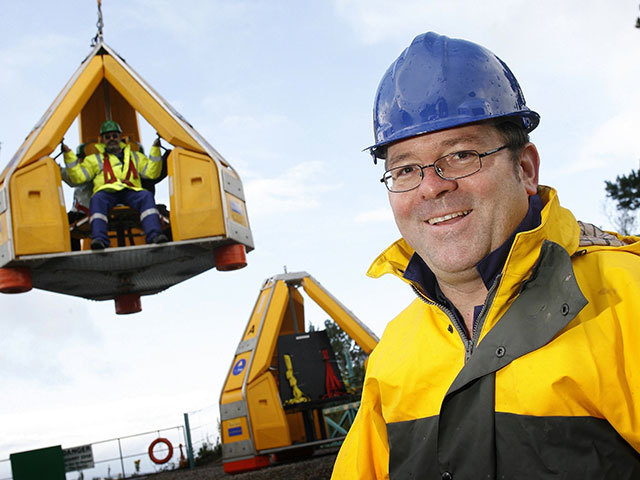
These are worrying times for many in the North Sea with question marks hanging over one of its most fundamental activities of crew changes for offshore installations. It is everyone’s understandable wish to be able to travel safely to and from their place of work and discussions around this issue can be emotive, sometimes driven by fear and confusion about the actual risks.
As a company involved globally in the transit of around one million passengers each year to and from offshore installation we have developed some unique perspectives on offshore crew logistics and we are keen to share some of what we have learned with the industry.
Some regions have embraced a multitude of crew transfer methods, while others are more dependent on a single mode of transport. For example, the industry within the UKCS is almost entirely reliant on the helicopters – a dependency which has led to problems with business continuity on several occasions in recent years.
Given the challenging weather conditions in the northern North Sea and the long distances to its offshore installations, it is understandable that marine transfer has not evolved as part of the culture and tradition. Also until the 90s marine transfer was an activity that received virtually no focus or investment and antiquated equipment and practices reinforced the perspective that it had no relevance in the developing North Sea.
This issue is compounded as responsibility for marine transfer often seems to fall between the stool of asset operators, vessel operators, safety, marine and production departments, with no-one wholly owning the issue. Finally, unlike the aviation sector, the marine sector historically did no systematic collation and analysis of transfer data, fuelling misconceptions about the actual risks. In short opinion has tended to triumph over facts.
It doesn’t have to be like this.
To gain another perspective, we only need to look to the far side of the Atlantic in Canada. A region with a very strong safety culture it also faces unique and challenging operating conditions. But interestingly, because Atlantic Canada is affected by persistent fog every year, a total reliance on aviation has never been an option for the region. As a result Canadian operators have built up an impressive safety record and, unlike in the North Sea, they’ve gained the full confidence of their workforce.
Following the most recent disruption to helicopter services, North Sea operators are again reviewing crew transfer alternatives. The positive news is that there is a considerable (and growing) body of independent evidence to indicate that marine transfer offers the safest and one of the most reliable methods of offshore access and a viable alternative to helicopter transit.
North Sea demographics (or the distances to most installations) suggest that aviation will remain the method of choice. That said, over the past five years a new generation of advanced high speed, high comfort, crew supply vessels – such as Seacor’s CrewZer – has challenged even this assumption and some blue-chip operators and regions have moved away from helicopters.
A good crew supply solution should provide high levels of safety, speed and reliability, as well as operational flexibility. Vessels such as the CrewZer access solution can deliver up to 30% savings on logistical costs, whilst enhancing safety or passenger welfare.
Good alternatives exist and recently a joint industry group of lifting and transfer specialists and vessel operators developed Ten Golden Rules for Crane Transfer Safety to communicate best practice. Modern transfer devices also design out much of the risk by offering passengers high levels of protection, and reducing the reliance on human responses.
Despite residual concerns and misconceptions about marine crew supply it does offer a very safe and reliable alternative to helicopter services. The safety track record even in harsh weather areas such as Canada has been first class. Like all transport solutions it should be planned and performed with caution. But operators planning marine based alternatives can feel confident that properly executed marine transfers offer a safe and reasonable alternative to the more familiar helicopter.
Philip Strong is Reflex Marine’s chief executive.
Philip’s passion for design and innovation combined, and extensive experience in the offshore sector led to the founding of Reflex Marine in 1992, with a clear mission to create safer, more efficient access solutions.
Accredited as inventor of the Reamer Shoe, winner of the Scottish Offshore Innovation Awards, Philip is continually innovating and adding to an already impressive collection of patents and unique products.
He founded the Reflex Foundation as a vehicle for a range of philanthropic activities with a focus on sustainability, energy efficiency and education.
Recommended for you
